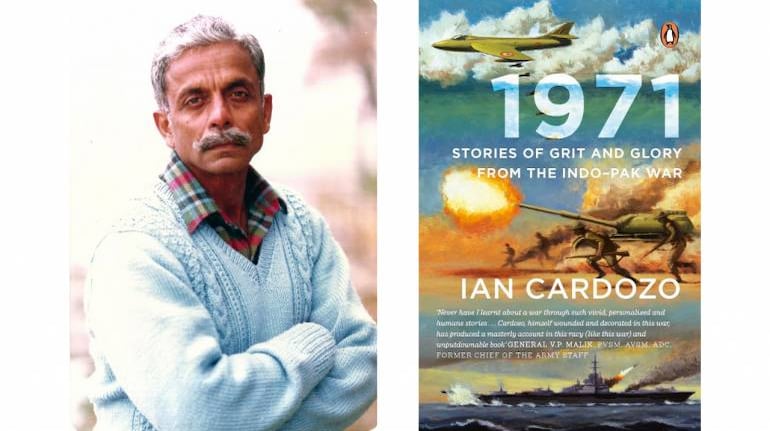Numerous commentaries have been written about the 1971 Liberation War. The sheer stories of grit, determination and valor have always appealed and inspired the general public. One such story from the war-veteran, Major General Ian Cardozo, who was one of the many fighters on ground, has documented about the heroics of the Indian military in his book – “1971 – Stories of Grit and Glory from the Indo-Pak War”.
About the Author
Influenced by stories of the World war and inspired by his school senior, Sunith Rodrigues who later became the chief of the Army staff, instilled the love for joining the army. Cardozo later went on to become the first National Defense Academy cadet to receive both gold and silver medals for best all round performance and merit which, naturally, was a rare feat. Hugely motivated by John Masters’ appreciated book – Bugles and a Tiger, sealed his decision to join the Gorkha Rifles. He served with the 4th battalion (4/5 GR) during the Liberation War and later commanded the 1/5 GR.
Cardozo, who stepped on a landmine in the later days of the 1971 war and had to amputate his own leg and bury it in order to continue his service, later commanded the 1/5 Gorkha Rifles instead of being chained to a desk job. Outrunning the able-bodied officers over icy mountains, Cardozo became the first war-disabled Indian officer to command a battalion, brigade and even a whole division. The sheer determination of the soldier obviously came out from a place of nation’s love rather than just a regular discharge of duties.
Married in 1966 to his lady-love Priscilla Cardozo and raised a family, later chaired the Rehabilitation Council of India after retirement, and is currently the chairperson of the Centre for Armed Forces Historical Research. In Spite of numerous accolades to his name, Cardozo’s writing is humane, humble, laudatory and is even complimenting the due credits of the enemy which is currently in short supply in the current jingoistic environment.
The Book
The book forms an enriching collection of 14 stories of the Indian Armed forces, cherishing the courage of the Gorkhas, inception of Bangladesh, sinking of the PNS Ghazi, hunt for INS Vikant, excerpts of bombing Karachi harbour by the Indian Navy, tank battle at Longewala etc.
The book effortlessly sets an absorbing and engaging tone. The author, despite belonging to an army background, is a remarkable scene setter and beautifully makes the reader visualise the battlefield and its complex intricacies. A well-versed tour guide grabbing the reader’s attention and projecting to noteworthy efforts of both the sides, sketches an old-world flavour and exceedingly captures the reader’s concentration from the word-go.
Numerous excerpts like how the Indian Army from the front in the war and resultantly suffering the most number of injuries and yet not surrendering to the enemy is an enthralling and scintillating reading experience. For instance, the section which mentions Cardozo’s own battalion of 18 officers who collided head-on with the enemy, leaves the readers teary-eyed as the author concludes with only seven soldiers standing and surviving. The book further manages to contain almost every emotion as it painfully touches the tragedy of the INS Khukri and its courageous captain, who went down with the ship and at the same time, incites the morality of the readers as it glides to the instance where a commanding officer of Gorkha battalion stood up against his seniors, rejecting their plan to capture an enemy and keep him in exile. The book stands apart from its contemporaries as it threads the plots coupled with interview excerpts of the martyr’s families with utmost conviction and humility.
Testimonials and References
With credible testimonials and praises from distinguished war veterans have further coursed the excitement and hype of the book. Eminent personalities such as Army Chief General V. P. Malik, referring to the book, opined that he has never learnt about a war through such varied yet personalized, sentimental yet realistic and humane bunch of stories. Admiral Arun Prakash, former Navy chief, who himself was an active servant of the 1971 war, has remarked that the book is a must read and must be consumed by the people, especially by the Gen X and millennials as it is written in the easiest language and style of them all.

